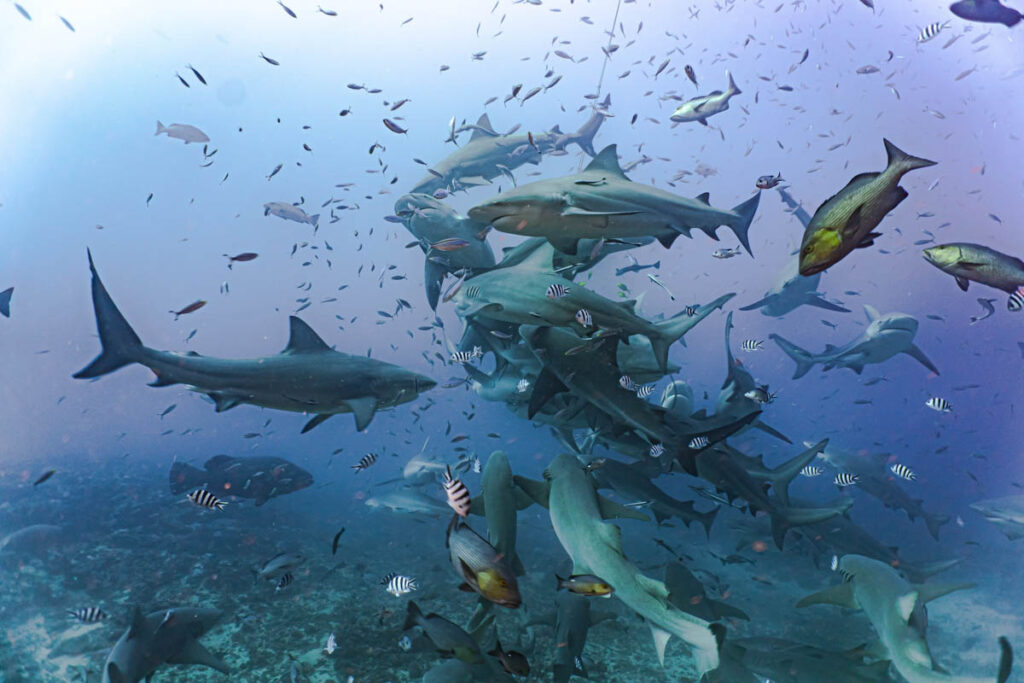Known as the Soft Coral Capital of the World, Fiji attracts divers from around the world. It is an idyllic place for a dive vacation, and the backdrop of forest-draped islands and pristine beaches is hard to take your eyes off between dives.
What sets Fiji apart is not just its breathtaking landscapes but the extraordinary diversity of its underwater ecosystems. With over 330 islands and more than 145 dive sites, Fiji offers an unparalleled diving experience. You can explore rainbow-hued reefs, swim with marine megafauna, and enjoy easy diving (or more thrilling dives) in warm, blue waters. If you’ve ever dreamed of a paradise found, Fiji is your ultimate destination.
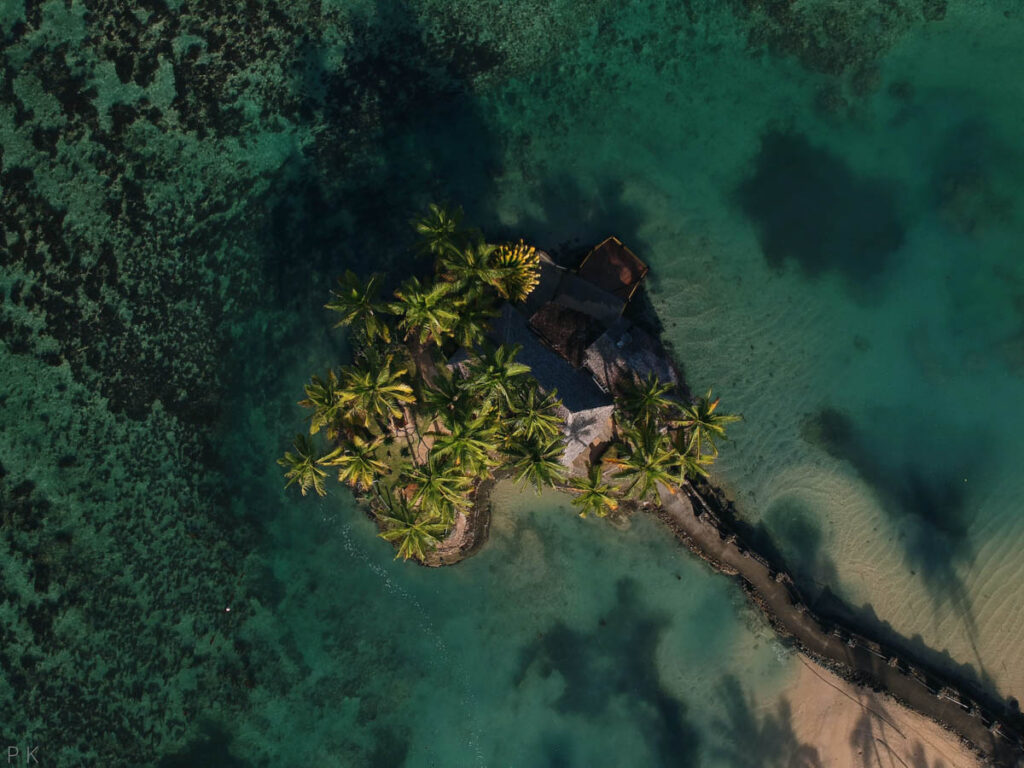
Photo by Prem Kurumpanai on Unsplash
Where to go diving in Fiji.
- Great Astrolabe Reef, Kadavu.
The Great Astrolabe Reef at Kadavu Island is the world’s fourth-largest barrier reef, offering landscapes of vibrant corals and schools of tropical fish. Be ready to encounter manta rays and sharks as you explore the intricate coral formations of this famous reef. At the lesser-known sites, you can discover underwater caves, walls, and canyons.
Kadavu offers a serene experience, perfect for those seeking solitude and a chance to unplug, enjoy waterfall dips, rainforest walks, and more. This area is a haven for both Open Water divers and experienced divers, promising an unforgettable dive vacation.
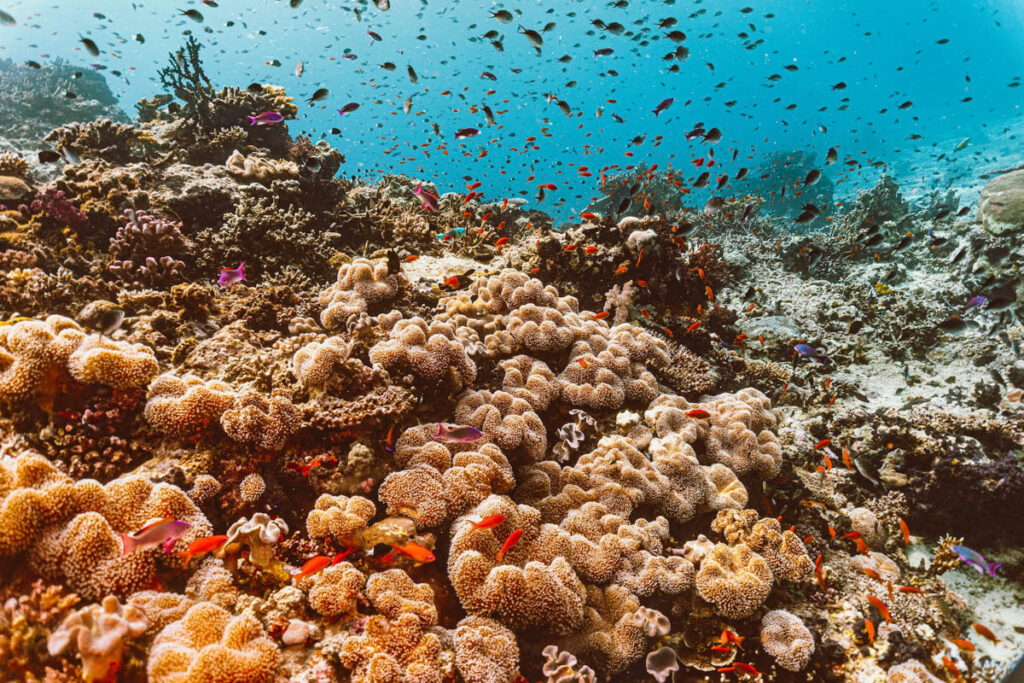
- Rainbow Reef, Taveuni.
Taveuni boasts Rainbow Reef, aptly named for its diverse coral formations. As you descend into the clear waters, you’ll be mesmerized by its soft corals. At the famous Great White Wall and Purple Wall, the walls are covered in thick blankets of white and purple corals. There is abundant marine life at this reef, including plenty of fish and nudibranchs. Taveuni is a macro photographer’s paradise, offering opportunities to capture the beauty of Fiji’s tiny critters.
- Beqa Lagoon, Viti Levu.
For an exciting and inspiring experience, head to Beqa Lagoon. This dive spot is renowned for its thrilling shark dive and sits within the Shark Reef Marine Reserve. This reserve is the first of its kind in Fiji and was established in 2004 to protect Fiji’s sharks and support the local community with an ecotourism income. There are numerous bull sharks at Beqa Lagoon, plus tiger sharks, whitetip and blacktip reef sharks, grey reef sharks, and more. All of which creates dive memories that will last a lifetime for shark fans.
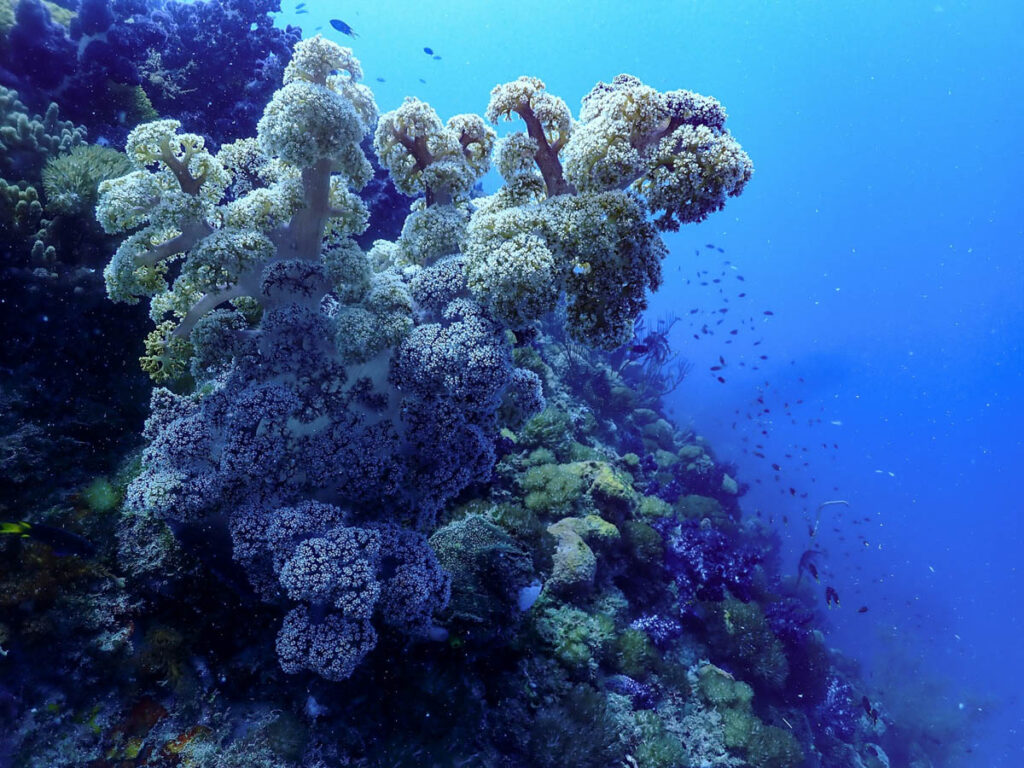
- Namena Marine Reserve.
Immerse yourself in the protected waters of the Namena Marine Reserve, a haven for biodiversity. There are thriving sea fans and intricate coral structures at this beautiful marine reserve, with barracudas, reef sharks, and sea turtles passing by. The reserve’s commitment to conservation ensures a pristine underwater environment, making it a must-visit for those passionate about sustainable and responsible diving.
- Yasawa Islands.
The Yasawa Islands, a chain of 20 ancient volcanic islands, has some of Fiji’s most picturesque white-sand beaches and excellent diving. There are dramatic landscapes with gullies, walls, and caverns to explore, plus shallow reefs perfect for beginner divers. There isn’t much soft coral growth at the Yasawa Islands, but there is an abundance of large pelagics. It is also one of the best areas in Fiji to swim with manta rays.
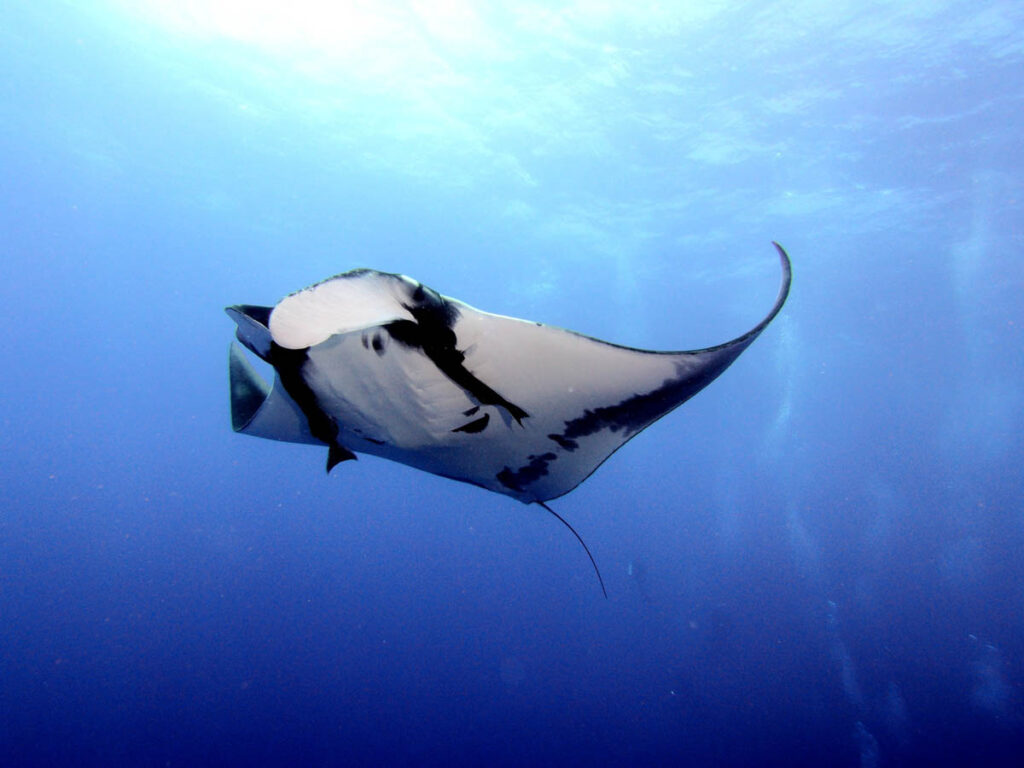
When to go diving in Fiji.
You can go scuba diving in Fiji all year and there are two distinct diving seasons:
- Summer (November to April):
Fiji’s summer has warm waters up to 28 °C (83 °F) and increased plankton growth. The water isn’t as clear as during winter, but the warm water spawns more life, making it a great season to search for Fiji’s critters.
- Winter (May to October):
The water temperature drops to a still-warm 23 °C (72 °F) and creates spectacular water visibility – up to 50 meters (150 feet). It is the best time to visit for big fish encounters, manta rays, and humpback whales.


